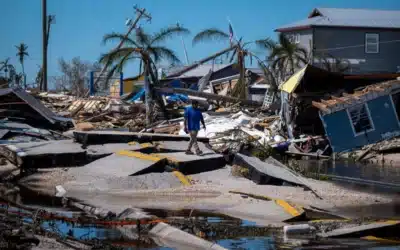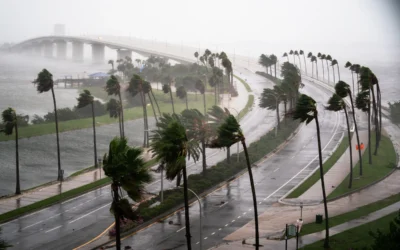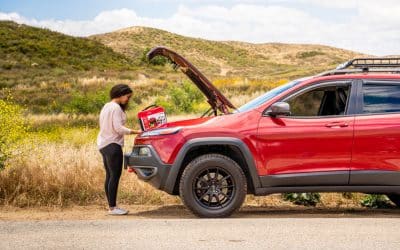It’s easy to think, “It’ll never happen here.” But no one is immune when it comes to natural disasters—tornadoes, floods, hurricanes, earthquakes, and more. This is why disaster preparedness is not just a precaution but a necessity.
Having a disaster kit may seem like something out of a doomsday movie, but it’s practical. Just ask the 500,000 people in North Texas who lost power for days after severe weather in June. It’s about taking control of your situation and being prepared for the unexpected.
By taking just a little time to prepare, you can minimize the impact of a disaster and stay safe. Here are the essentials—plus a few “nice to have” extras—for your at-home survival kit.
What do I need for my disaster kit?
Each disaster is unique and poses different challenges. That’s why it’s crucial to consider your geographical location, disaster likelihood, and recommendations from trusted organizations while assembling a kit that caters to your specific needs and those of your family.
Let’s dive in.
Essential: Survival Resources
When assembling your storm or disaster emergency kit, here’s what you should pack first.
- Water. Humans can only survive about three days without water. Aim for one gallon per day per person.
- Non-Perishable Food. This could include canned or dried meats, vegetables, fruits, and other non-perishable items. Crackers, granola bars, trail mix, and instant coffee are great for your kit. Make sure you throw in a can opener!
- Communication. Be prepared with a battery-powered or hand crank radio and a NOAA Weather Radio. You can print off or buy some local maps. Remember, you may not be able to access the internet or utilize the phone service you’ve come to rely on. While at it, pack a whistle for those dire situations where you need someone to find you.
- Cell phone with chargers and backup battery. If you can get cell phone access, you’ll want to use it. Pack your cell phone chargers and backup batteries, just in case.
- Light. When the power’s out, be prepared with ample flashlights and lanterns to keep yourself and your family safe and secure. And don’t forget extra batteries.
Essential: Health and Safety Supplies
Next, be prepared for injuries and medical needs. Here are a few go-to items to have on hand.
- First aid kit. Make sure it includes sterile gauze pads, adhesive bandages of various sizes, medical tape, and ace bandages. You may also want over-the-counter drugs such as ibuprofen, antidiarrheal medications, or antiseptic ointment.
- Prescription medication and devices. If you can swing it, try to have an extra set of your daily medications that you can’t go without. A 3-day supply is a great place to start. And don’t forget your pet supplies and medication! If you wear glasses, pack an old or extra pair along with some additional contact lenses.
- Toiletries and feminine hygiene supplies. Deodorant, hair ties, wet wipes, and toothbrush/toothpaste can add extra comfort in a scary situation. And don’t forget feminine hygiene products if you need them.
- Clothing. Include some extra clothes, rain gear, and sturdy shoes. If you live someplace extra cold, don’t forget hats, gloves, and winter coats. If you live in a place prone to heat waves, you may want to pack some heat relieftowels.
- Sleep. Include sleeping bags, bedding, or blankets.
Essential: Sanitation Supplies
When a storm or natural disaster hits, sanitation can be just as detrimental to you and your family’s health and safety. Here are a few items you’ll want to keep on hand.
- Household supplies. Paper towels, napkins, and tableware are easy to pack and help keep food sanitary.
- Cleaning Supplies. Pack disinfecting spray, sanitizer, soap, and cleaning supplies. It also helps to add rubber gloves, a scrub brush, sponges, and garbage bags.
- Portable bathroom supplies. Remember, you may be stuck without water. There are some jaw-dropping (or pants-dropping?) innovations such as WAG bags (waste alleviation and gelling bags), portable commodes, or even bucket commodes complete with a toilet seat. You can also just buy a complete portable bathroom system with a privacy tent.
- Bonus: If you’re outdoorsy, you can use these portable travel toilets for hiking and camping!
Extras: Security Supplies
Now, let’s move on to some that are a little further down the list but still extremely helpful to include in your disaster kit.
- Tools. Include a rope, shovel, hammer, and nails. Better yet, include a multi-tool with pliers, and throw in some duct tape. Reflective vests and work gloves help. Include tools needed to shut off gas or water and a fire extinguisher.
- Document holder with important documents. These could include copies of medication lists and pertinent medical information, proof of address, deed/lease to home, passports, birth certificates, insurance policies, and more.
- Cash or traveler’s checks. Due to power outages, your surrounding area may not have credit card readers available. Make sure you can buy what you need once you can.
Extras: Activities to Pass the Time
During a crisis, you may want activities to distract you from danger and alleviate stress. This can be particularly important if you have small children. Here are a few extra items that can help.
- Writing Utensils. Plain paper, coloring/activity books, and writing utensils are relatively cheap and can be used in a variety of ways. Paper airplanes, journaling, tic-tac-toe, you name it.
- Books, games, puzzles, or a deck of cards. Again, you can find these super cheap, and they can help ease the stress of a disaster.
A disaster supply kit is not just a collection of items. It’s a shield that can ensure safety and comfort in an emergency. Taking some time to think through the essentials – and maybe a few extras –can go a long way in providing a sense of security and peace of mind.
Don’t be caught with your pants down in a disaster. Cleanwaste is here to help you avoid bathroom blunders during times when toilets are unavailable. Get prepared with our portable toilet solutions today!




